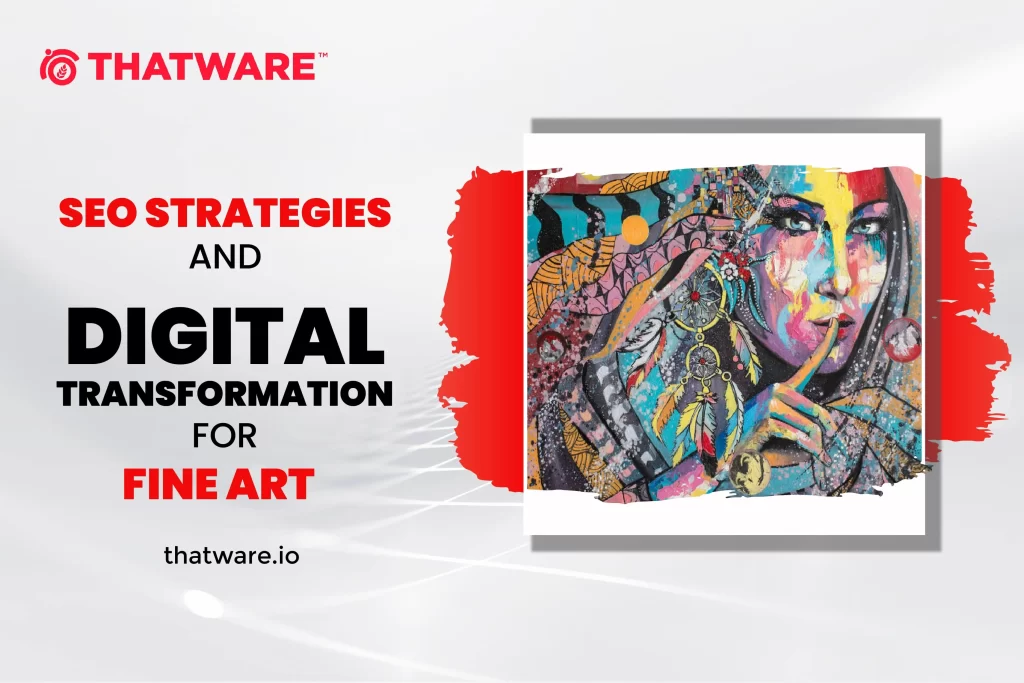Understanding and utilizing Search Engine Optimization (SEO), which is used to target clients, can increase the visibility of your website. The practice of SEO involves changing the links and content of a website in order to increase traffic and position it at the top of search results on Google and other search engines. If you are an artist and run a fine arts business, paying attention to the website’s SEO guidelines will help you adjust the balance as necessary to fit your objectives.
Rankings in organic (unpaid) search results are the main objective of SEO. Gaining ranks implies your website will become more visible and may attract a larger audience. Because of this, SEO for artists is crucial.
Improve the website’s keyword density for the fine arts
The design of your website and the information it promotes can influence how well it performs in search engine results pages, but it’s more crucial to use pertinent keywords on a web page and choose the main keyword each page will focus on. Without seeming forced, sprinkle the term as organically as you can across the document. Use terms that both describe your procedures and the things you produce. Long phrases are helpful for new companies with internet marketing since they face less competition from other websites. Your primary keyword may be a single word, such as “mugs,” or a phrase, such as “plates and bowls.”
To find keywords and see how a list of keywords could perform, utilize the free Google Ads tool Keyword Planner. New and seasoned advertisers can both benefit from using Keyword Planner. It is a workshop for developing a new search network campaign, a collection of websites where your adverts may be relevant to searches. You may set competitive bids and budgets to support your campaigns with the aid of the keyword planner.
Social Networking
It doesn’t work to produce excellent social media content, and hope that attention will be drawn to your website. Take the initiative. Use social media to market your content and increasing visitors to your website. While Facebook and Instagram postings can assist your site to appear in tailored feeds and search results and look amazingly successful in niches, Twitter is usual for brief and alluring links. Post product photographs on aesthetically appealing websites like Pinterest and Instagram to attract clients to manage the business of fine arts.
While using social media, reply to comments without bombarding people. You will get tweets and retweets if you behave politely on Twitter. In other words, demonstrating responsiveness, promptness, and courtesy earns you favor, boosts consumer engagement, directs visitors to your website, and creates a positive impression of the business.
Marketing Funnel
Once people visit your website, you want them to take some action, like making a purchase or registering for a course or class. Setting up clear and effective funnels drives traffic to your website and turns a portion of those visitors into a loyal client base that regularly makes extra purchases.
Funnels begin by drawing in a large audience and then focus on drawing in only those people who will take the desired action. The fundamental tenets of the funnel strategy include making a brand widely visible, attracting the most pertinent and interested customers into the funnel for better customer experiences, learning more about anticipated clients, and nurturing clients to boost promoter activity and customer lifetime value. These are the steps in a funnel:
- Build Awareness: The audience takes note of your offerings or company in the fine arts. Perhaps they came upon a tweet or link on Facebook or Twitter.
- Maintain Interest: The intended audience becomes briefly aware of your company’s existence and decides to visit your website to learn more about your enterprise. They may have read your blog article.
- Consideration: The audience is now considering your company but isn’t quite ready to make a purchase—they could even be comparing your goods to those of your rivals.
- Conversion: Your target market is now prepared to purchase items from your website.
- Loyalty: The same consumer consistently chooses your product over your rivals.
- Advocacy: A consumer defends your company’s image by endorsing you to prospective customers and participating in your Twitter thread.
Bottom Line
A fantastic way to channel traffic and direct visitors to your website is by sending out frequent newsletters and advertising deals via email. Use blog articles and landing pages to share helpful information and connections to areas of your website where customers may buy things (pages developed on your website for promoting particular offers).
